Helsinki: A Walking Tour of Architectural Highlights

If you are looking for a deep dive into the architecture of the city, consider booking a private tour with a local city planner.
Stop 1: Fazer Cafe kluuvikatu
Your walking tour begins at Fazer Cafe, which is know for its chocolates. As the brand's flagship cafe, visitors can indulge in various delicious cakes, pastries, and coffee. Additionally, the cafe offers a section where Fazer sweets and gifts can be purchased.
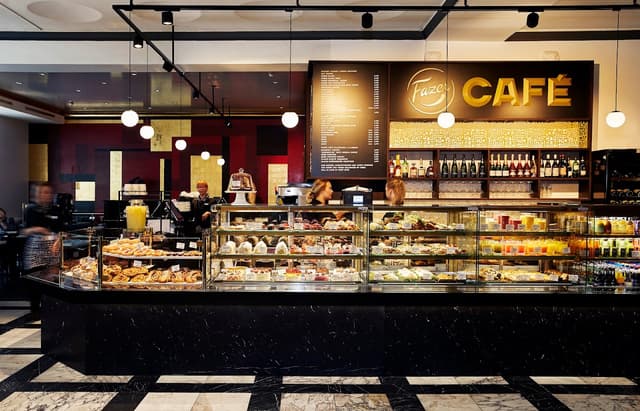
Optional Stop: National Library of Finland
Swing by the library and pop in for a bit. To get there, head north on Kluuvikatu, turn right onto Yliopistonkatu and turn right onto Unioninkatu. You’ll be walking a distance of 400 m.
The National Library of Finland is not a typical tourist attraction, but its main interior hall is worth visiting. It showcases mesmerizing murals and impressive marble columns. The columns are adorned with gold leaf on their pinnacles and the domed ceiling is decorated with images and ornaments that represent knowledge and learning. An indoor stop to warm up or cool down depending on the season.
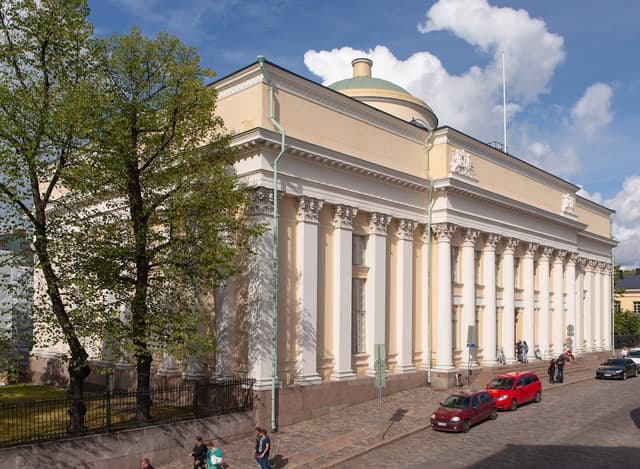
Stop 2: Senate Square
Your next stop.
Helsinki's central square, known as the Senate Square, has retained its prominence for centuries, serving as the city's primary gathering place since the 17th century. In 1808, under Russian rule, the square was reconstructed in its present form.

Stop 3: Helsinki Cathedral
Continue on to the Cathedral.
In the city of Helsinki, the Helsinki Cathedral stands as an iconic structure that captures the essence of the cityscape. With its striking chalk-white hue and elegant blue domes, the cathedral commands attention as it proudly overlooks the Senate Square. The grandeur of the cathedral is further enhanced by the majestic stairs that lead up to it from the square.
Designed by the talented Carl Ludwig Engel, the construction of the Helsinki Cathedral reached completion in 1852, a remarkable 12 years after the architect's passing.
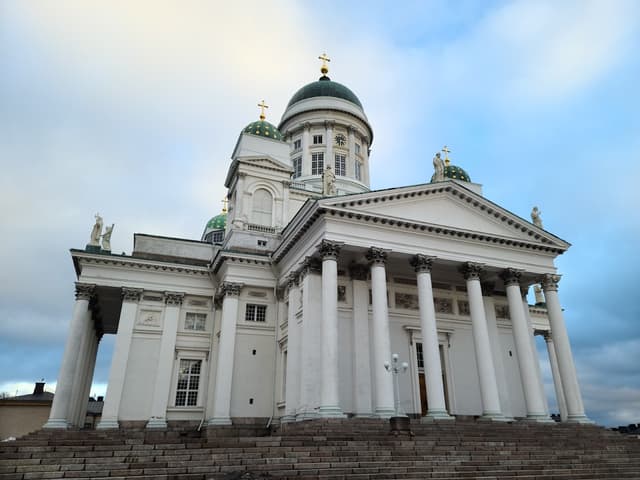
Stop 4: Aleksanterinkatu
Next, make your way to Helsinki’s oldest street. Here, you'll discover numerous cafes and restaurants. If you're in search of a quick bite, IZZA City Pizza is a great option. Along the street, you can find a range of international eateries, from sushi to Syrian mezze at Tawook Lab.
Aleksanterinkatu offers a vibrant commercial experience. Stretching from the Presidential Palace to its meeting point with Mannerheimintie, it is a bustling hub of fashionable shops, boutiques, and lively bars. Stroll along this iconic street to soak in the city's charm and catch a glimpse of Helsinki's charming old trams in action. Don't miss the flagship Stockmann department store, the largest of its kind in the Nordic region, adding to the street's allure.
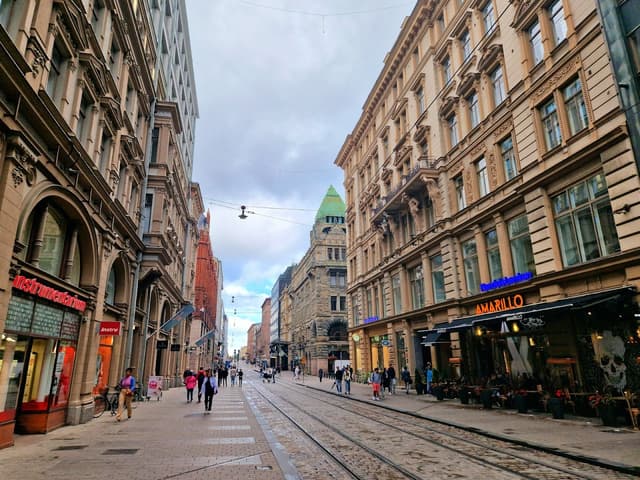
Stop 5: Pohjola Insurance Building
As you start walking down Aleksanterinkatu, don't miss a stop by the Pohjola Insurance Building.
Built in 1901 by architect Eliel Saarinen, every molding, windowsill, and doorway on the building's exterior is decorated with a carved stone figure. The term “Pohjola” denotes a mythical land from the Finnish epic Kalevala, where the Northern region of Pohjola was governed by an evil witch. It was also thought that the roots of the World Tree were located in Pohjola, which may explain the numerous reliefs of trees and squirrels adorning the building’s facade. More generally, the word signifies any northern direction. Considering its mythological inspiration, it’s unsurprising that the Pohjola Insurance company chose to embellish their building with enduring statues of monsters, fools, animals, and nature.
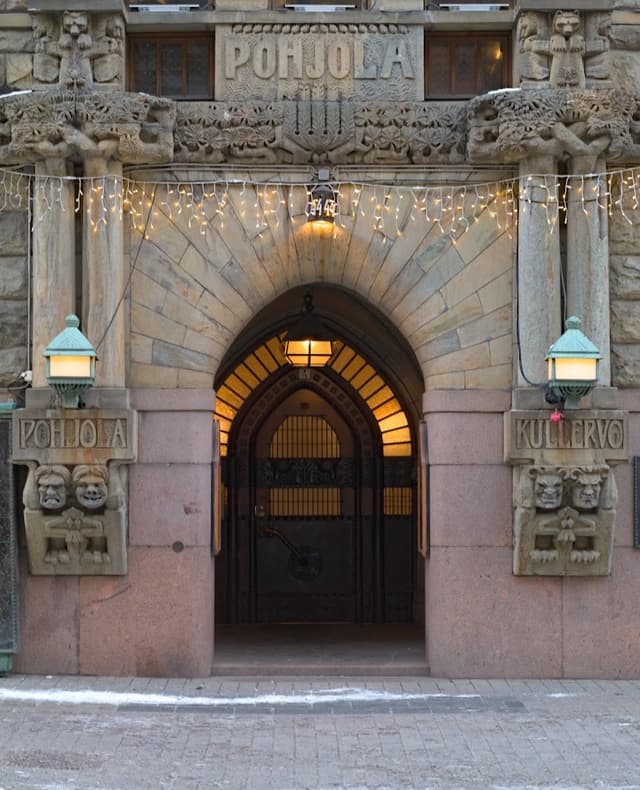
Stop 6: Kamppi Chapel
Continue your architectural journey to the Kamppi Chapel. Enjoy the vibrant streets of helsinki. The area is known for its contemporary architecture and urban atmosphere.
The Kamppi Chapel serves as a non-denominational refuge for those seeking solace from the bustling life of Helsinki. This striking structure is situated in Narinkka Square. With its oval shape inside and out, it is often characterized as neutral, austere, or unembellished. This simplicity resembles many multi-faith prayer rooms worldwide. However, its minimalist design does not diminish its significance. Constructed as part of the World Design Capital program that Helsinki won in 2012, the Chapel received the International Architecture Award in 2010.
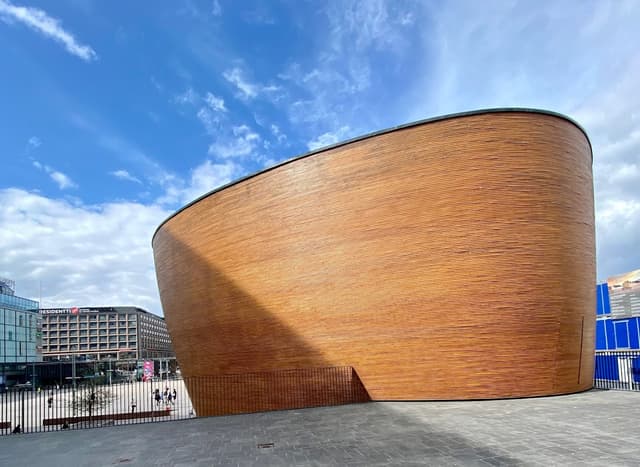
Stop 7: Amos Rex
As you leave the Kamppi Chapel, the next destination on this architectural walking tour is the Amos Rex, a contemporary art museum that embodies innovative design and creativity.
The design was created by JKMM Architects, recognized for their projects such as the Turku Main Library and the Finnish pavilion at the 2010 Shanghai World Expo. This new development showcased a captivating fusion of historical and modern elements. The design featured vaulted domes, enabling a spacious, pillar-free interior. Constructed from on-site cast reinforced concrete, these domes were not only structurally efficient but also enhanced the versatility of the space. Skylights were strategically positioned to frame views of nearby landmarks, including the central chimney, linking the underground museum to the surrounding cityscape.
Note: The museum is closed on Tuesdays. Closed 23-25 December for Christmas.
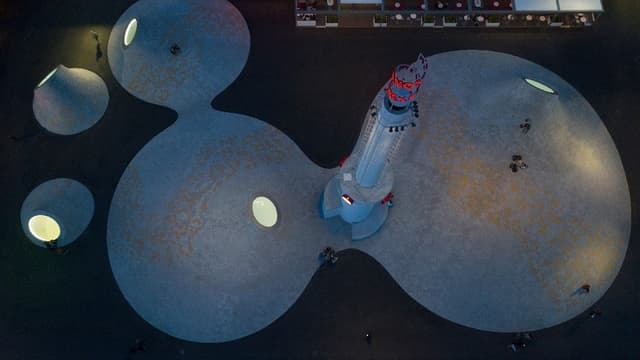
Stop 8: Central Railway Station
After exploring the innovative spaces of Amos Rex, continue your journey to the iconic Helsinki Central Railway Station, which is just a brief walk away. This architectural gem, known for its striking granite facade and majestic clock tower, stands as a symbol of the city and serves as a hub for both locals and visitors alike.
Helsinki Central Railway Station, designed by Eliel Saarinen in 1905 and inaugurated in 1919, exemplifies the late-Jugendstil architectural style. Widely regarded as one of the world's most beautiful railway stations, it serves as a significant symbol of Helsinki, accommodating nearly half a million visitors daily.
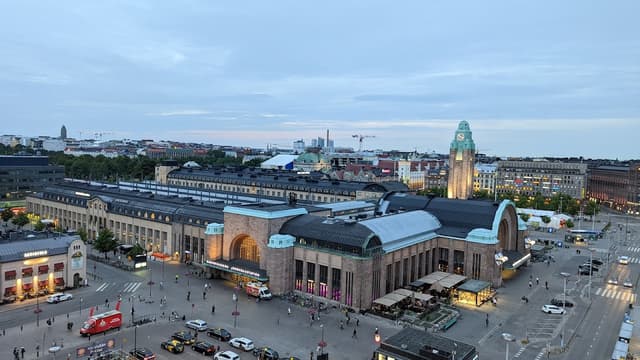
Stop 9: Museum of Contemporary Art
Just a short walk away is the Museum of Contemporary Art, also known as Kiasma. This striking building is celebrated for its unique, modern design and serves as a vibrant platform for contemporary art exhibitions. As you make your way to Kiasma, you'll have the opportunity to observe the interplay of modern architecture
Kiasma is a contemporary art museum part of the Finnish National Gallery, primarily dedicated to showcasing Finnish contemporary art. Its main functions include organizing changing exhibitions, expanding its collection, and conducting research. The museum emphasizes presenting the collection through annually changing thematic exhibitions and commissions new works to further enrich its offerings.
Note: The museum is closed on Mondays. Closed 23-25 December for Christmas.
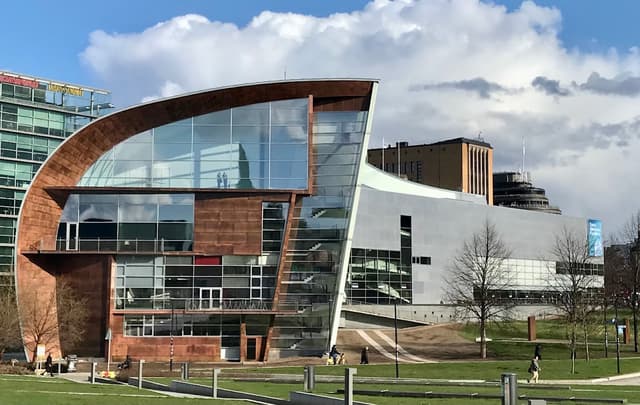
Stop 10: Oodi Library
Continue your exploration by heading towards the Oodi Library, a remarkable example of modern architecture intertwined with community spirit. Located just a short distance away, Oodi is not only a library but also a thriving social and cultural hub, showcasing a seamless blend of functionality and design.
Upon arriving at Oodi, you will be greeted by its striking wooden facade and open, inviting interior that redefines the traditional library experience, making it an essential stop on your architectural journey through Helsinki.
The National Library of Finland, established in 1844 and designed by Carl Ludvig Engel, is the oldest and largest scholarly library in the country. Notable for its 19th-century neoclassical architectural style, it represents a significant cultural asset in Helsinki. An annex, designed by Gustaf Nyström, was added in the early 20th century, further enhancing its scholarly resources and architectural significance.
Note: Closed 24-25 December for Christmas.
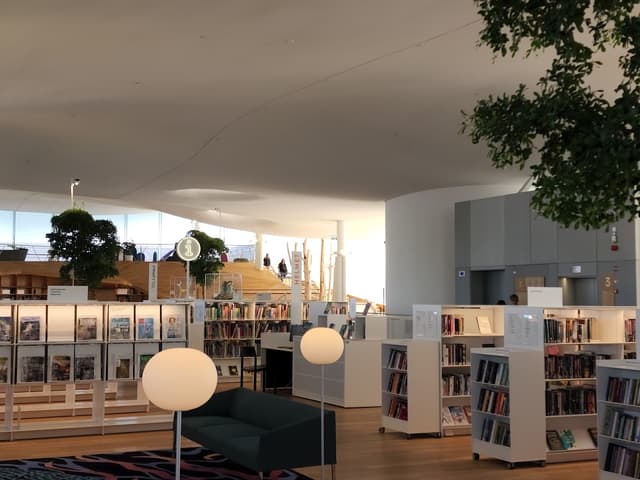
Stop 11: Temppeliaukion Church
For our last stop make your way to the Temppeliaukio Church, also known as the Rock Church. This unique architectural marvel is situated just a short walk away and is renowned for its stunning design, intricately hewn from solid granite and topped with a striking copper dome. As you approach, you’ll appreciate how the church naturally integrates into its rocky surroundings, offering a tranquil atmosphere that contrasts with the bustling city scene. Once inside, you’ll be captivated by the remarkable acoustics and the church's serene ambiance, making it a fitting culmination of your architectural tour in Helsinki.
Excavated directly into solid rock, the Temppeliaukio church is situated in the heart of Helsinki, at the end of Fredrikinkatu. Because of its special architecture, the church, completed in 1969, is one of the main attractions in Helsinki. The church hall is covered with a dome, lined with copper and supported on the rock walls by reinforced concrete beams. The interior walls are of rugged rock and rubble wall. Before noon, the light spreads from the row of windows surrounding the roof periphery to the altar wall, where an ice-age crevice serves as the altarpiece.
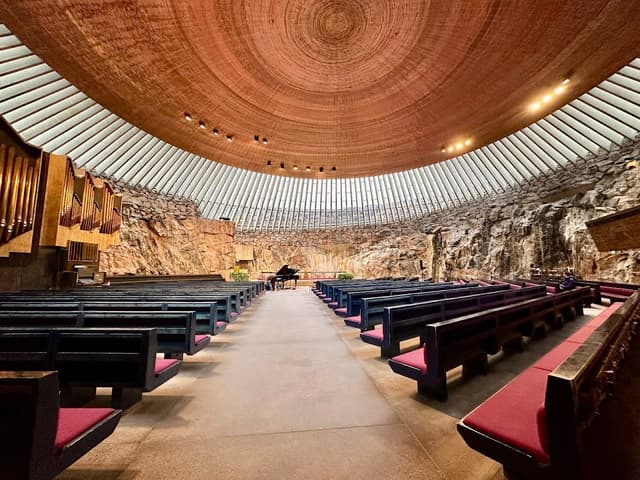
Other Stops

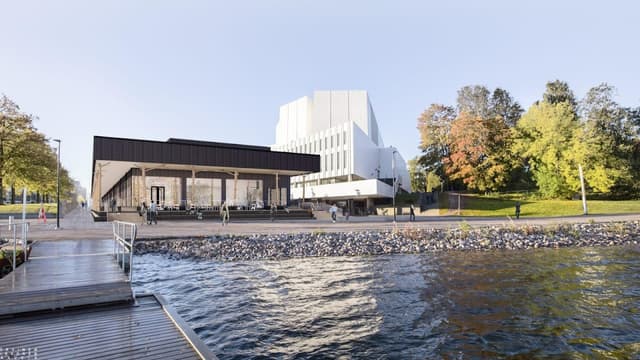
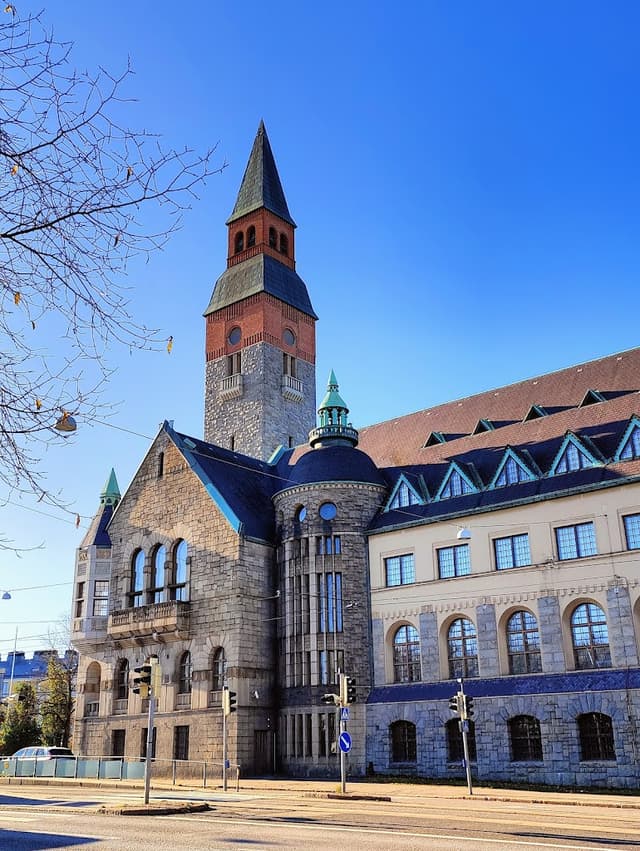
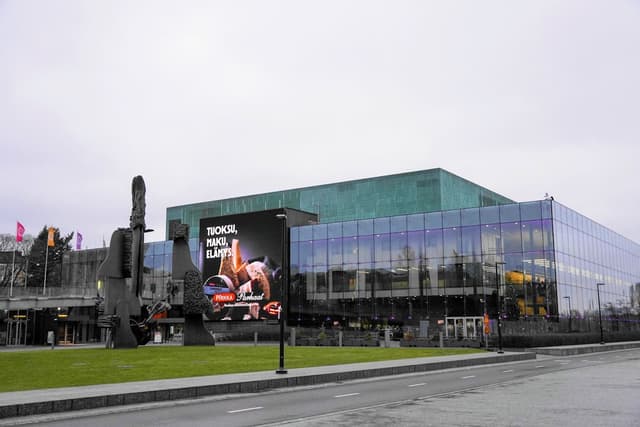

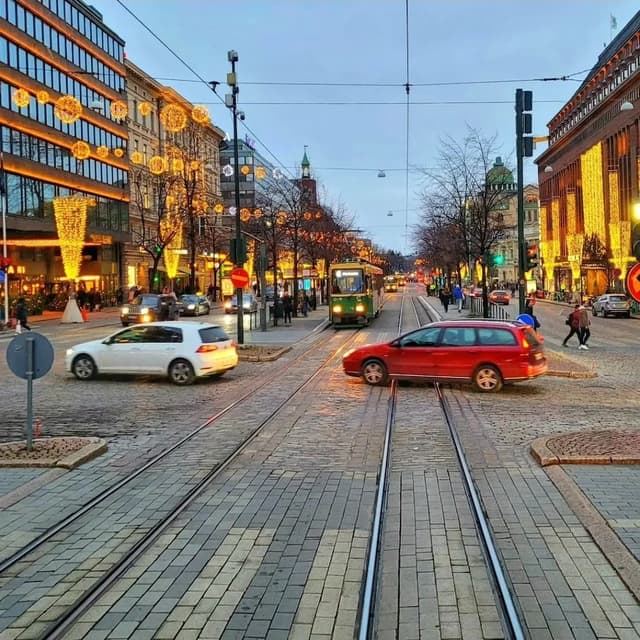
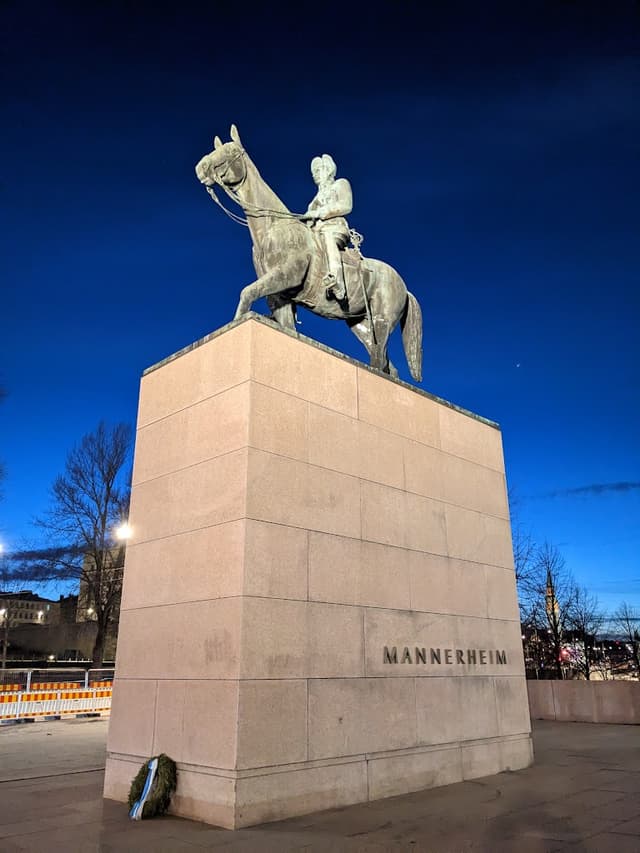
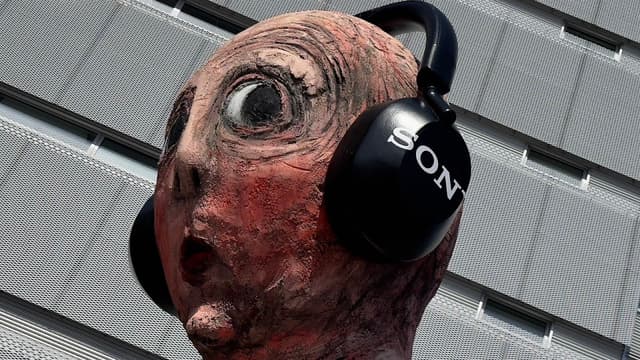
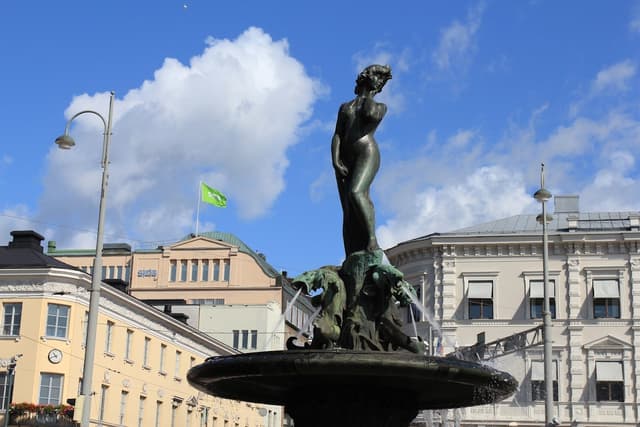
The home for unique & authentic travel
